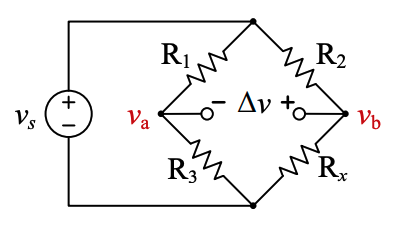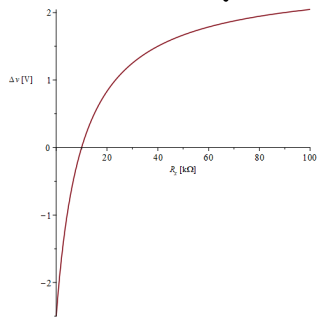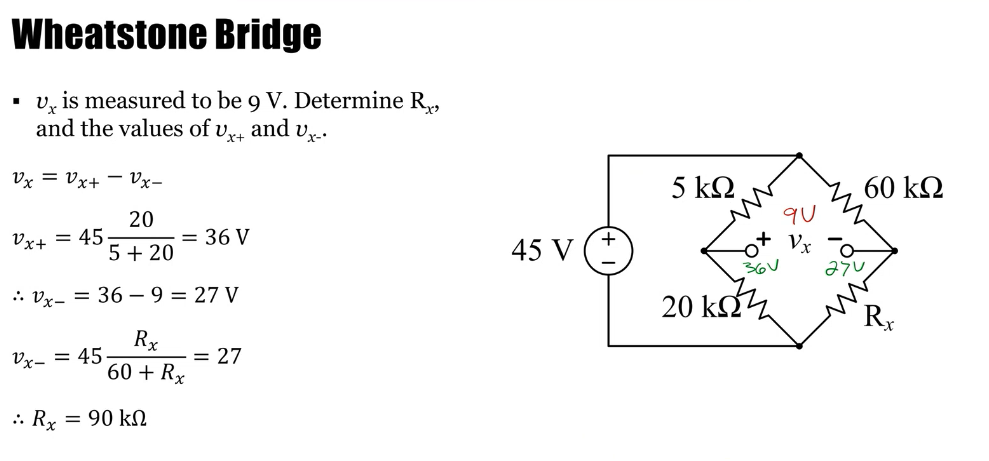A Wheatstone bridge circuit converts an unknown resistance into a measurable voltage difference , using two voltage dividers with known resistances through .

It’s basically just two voltage dividers that we’re subtracting.
This differential voltage output is preferable to single-ended voltage that one voltage divider would produce. Since all the resistors experience the same variation due to operating conditions, those errors should be self-cancelling.
It is also possible to buy highly-matched on-chip resistors. Often one resistor is a potentiometer for calibration.
There are two strategies for finding the unknown resistance:
- Vary until , then:
- is set so that at a known calibration point, then is used to calculate the resulting while in operation:
A software lookup table is often used to directly relate the measured with or the sensor’s input physical parameter since vs. is nonlinear.

Example
